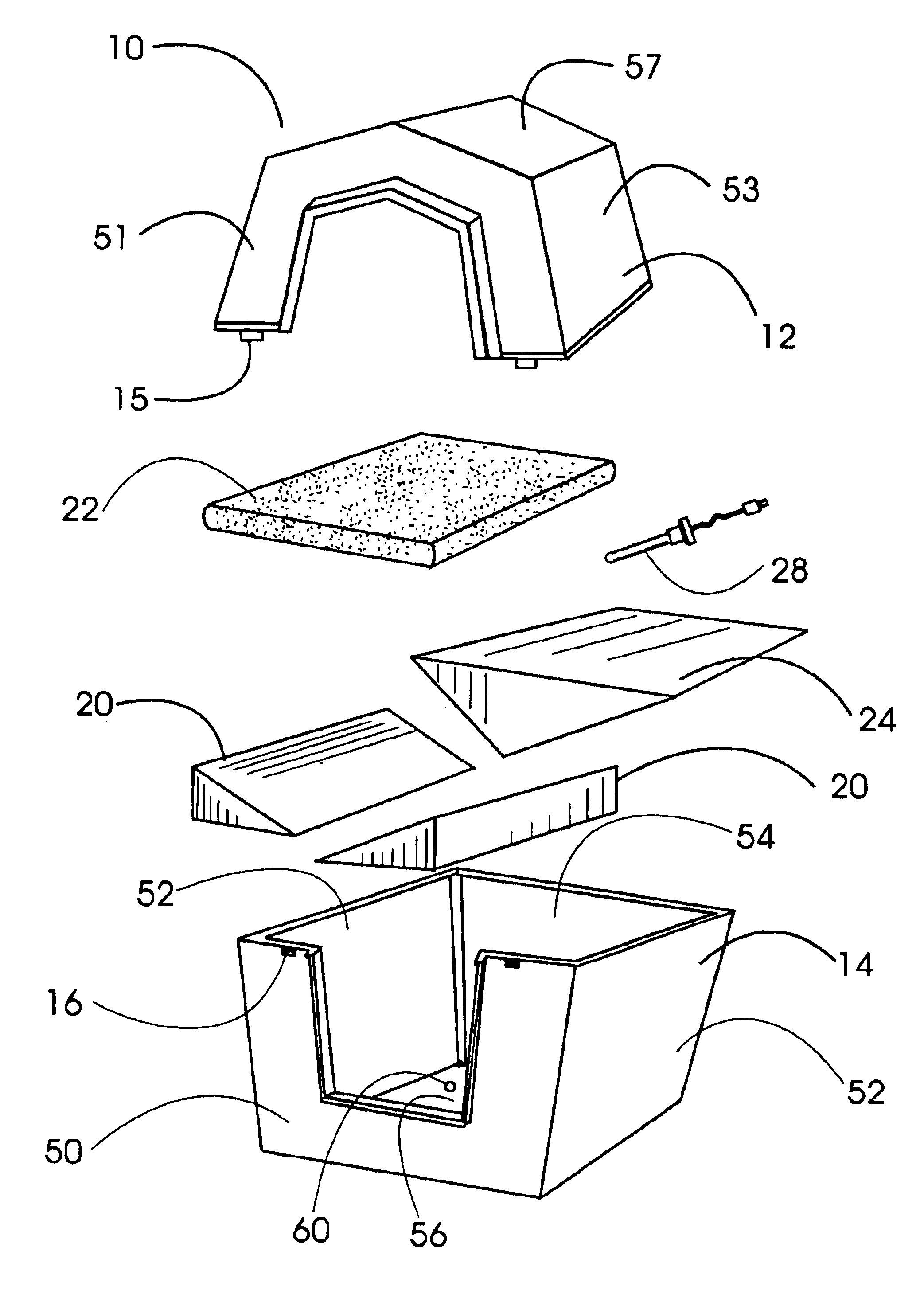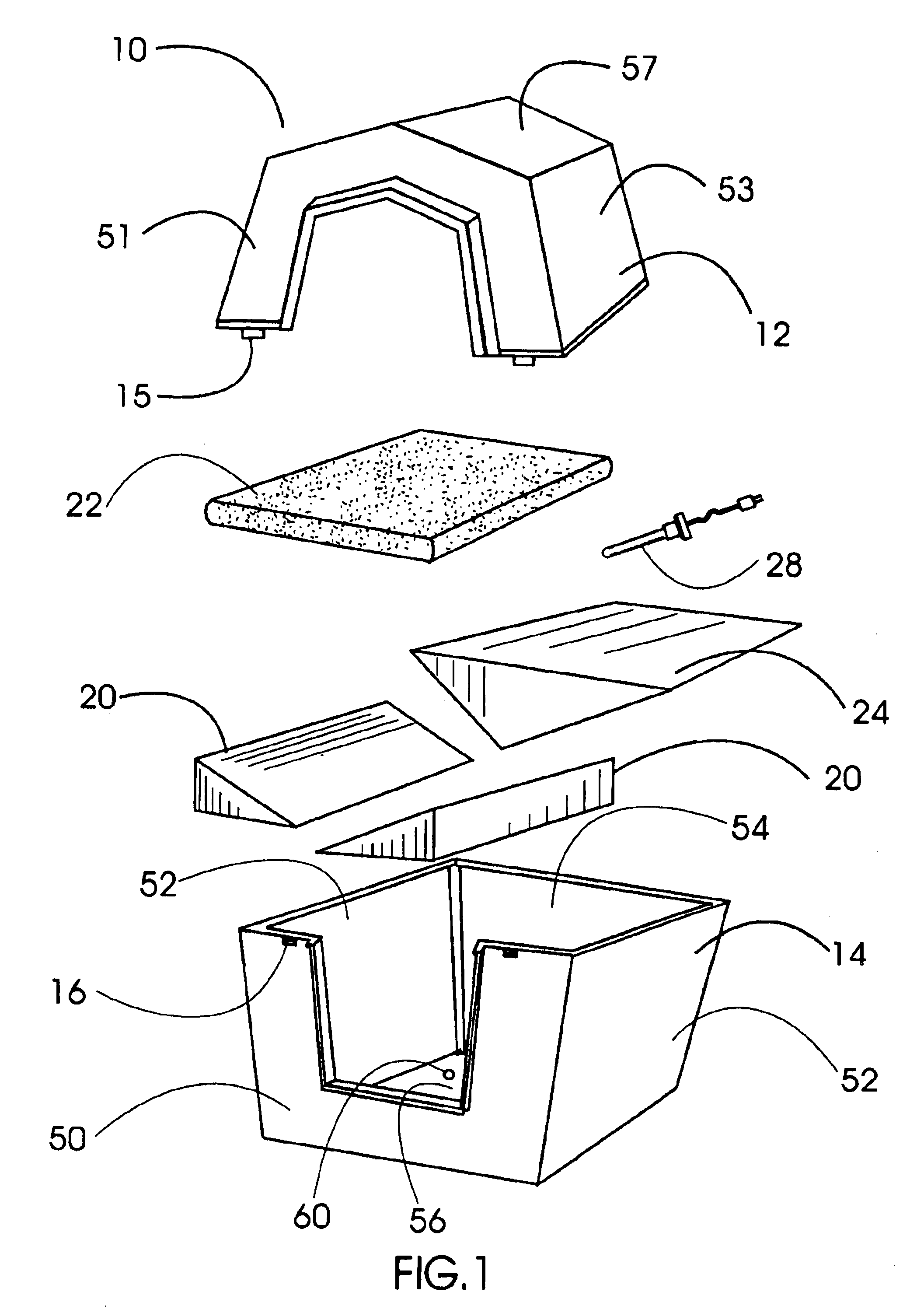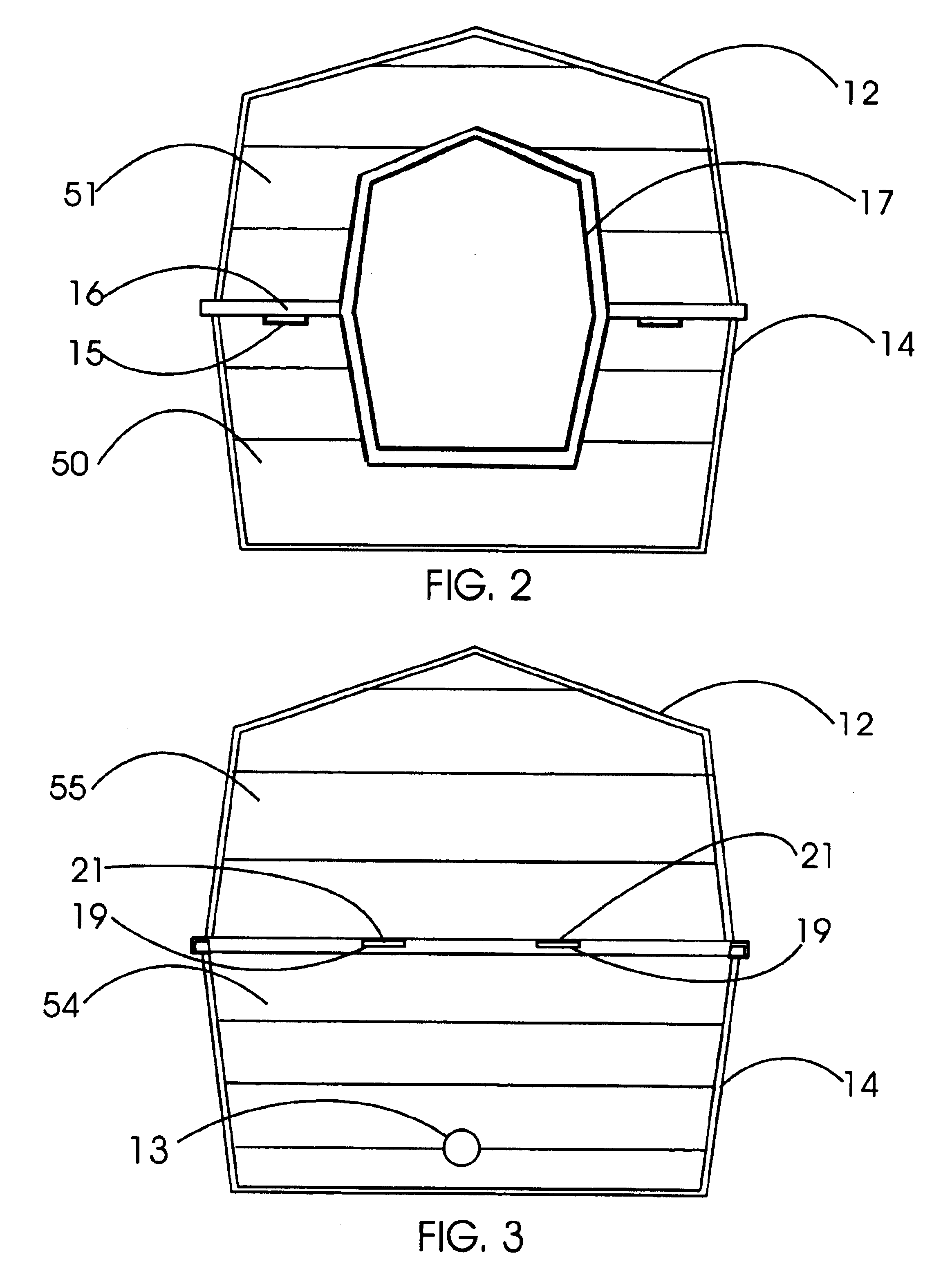Heated pet enclosure
a pet enclosure and heat sink technology, applied in the field of heated pet enclosures, can solve the problems of pet water beds, flexible vinyl bladders that are easy to be punctured, electric fires, etc., and achieve the effects of reducing heat loss from pets, accurate temperature control, and easy absorbing
- Summary
- Abstract
- Description
- Claims
- Application Information
AI Technical Summary
Benefits of technology
Problems solved by technology
Method used
Image
Examples
Embodiment Construction
Referring now to the drawings in which reference numerals designate like or corresponding parts through several views shown in FIGS. 1-22. The heated pet enclosure according to the present invention is designated by the reference numeral 10. The heated pet enclosure is comprised of a roof section (12) and a floor section (14) containing insulating material (20) which may be built into the bottom (56) of the floor section (14) or may be affixed with the floor section (14). Tank (24) is filled with a solution and a submersible heater (28) is sealed in tank (24). Pet mat (22) is placed on the tank (24). Roof section (12) is placed on floor section (14).
The alignment of the roof on the floor section is shown in FIG. 3, where tabs (19) fit in hinge receptacles (21). Front locking tabs (15) interface with locking receptacle (16) and secure roof to floor section. When the roof section (12) is secured with the floor section (14) an opening (17) is completed in the front wall of the heated p...
PUM
 Login to View More
Login to View More Abstract
Description
Claims
Application Information
 Login to View More
Login to View More - R&D
- Intellectual Property
- Life Sciences
- Materials
- Tech Scout
- Unparalleled Data Quality
- Higher Quality Content
- 60% Fewer Hallucinations
Browse by: Latest US Patents, China's latest patents, Technical Efficacy Thesaurus, Application Domain, Technology Topic, Popular Technical Reports.
© 2025 PatSnap. All rights reserved.Legal|Privacy policy|Modern Slavery Act Transparency Statement|Sitemap|About US| Contact US: help@patsnap.com



